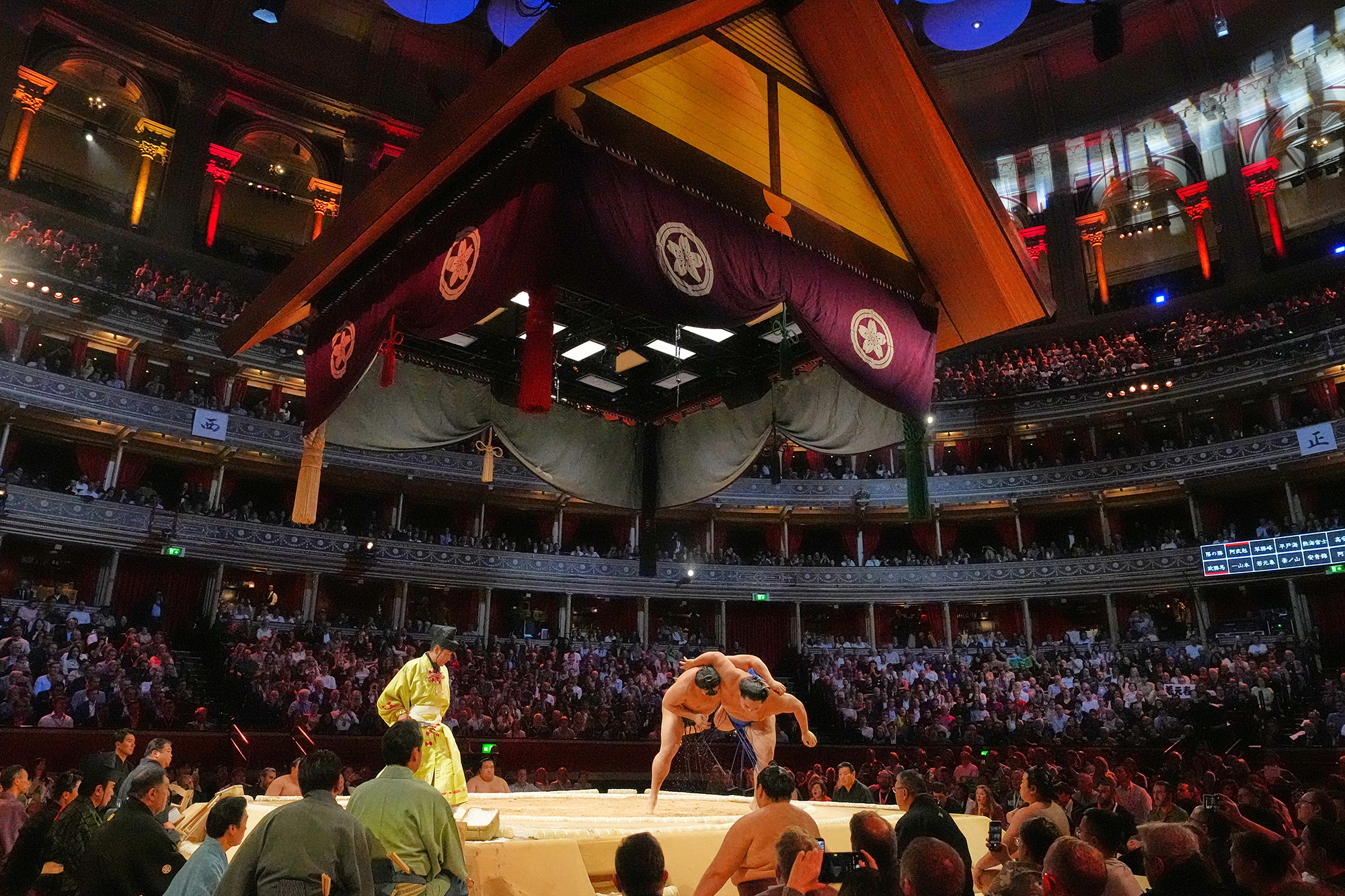Locked in immovable stalemate, a human fridge stands cheek by jowl with a corporeal articulated lorry, urged on by a boisterous bellow of “Go on, son!” from the rafters. This is sumo, British style; where ancient Japanese history meets London’s midweek post-work crowd.
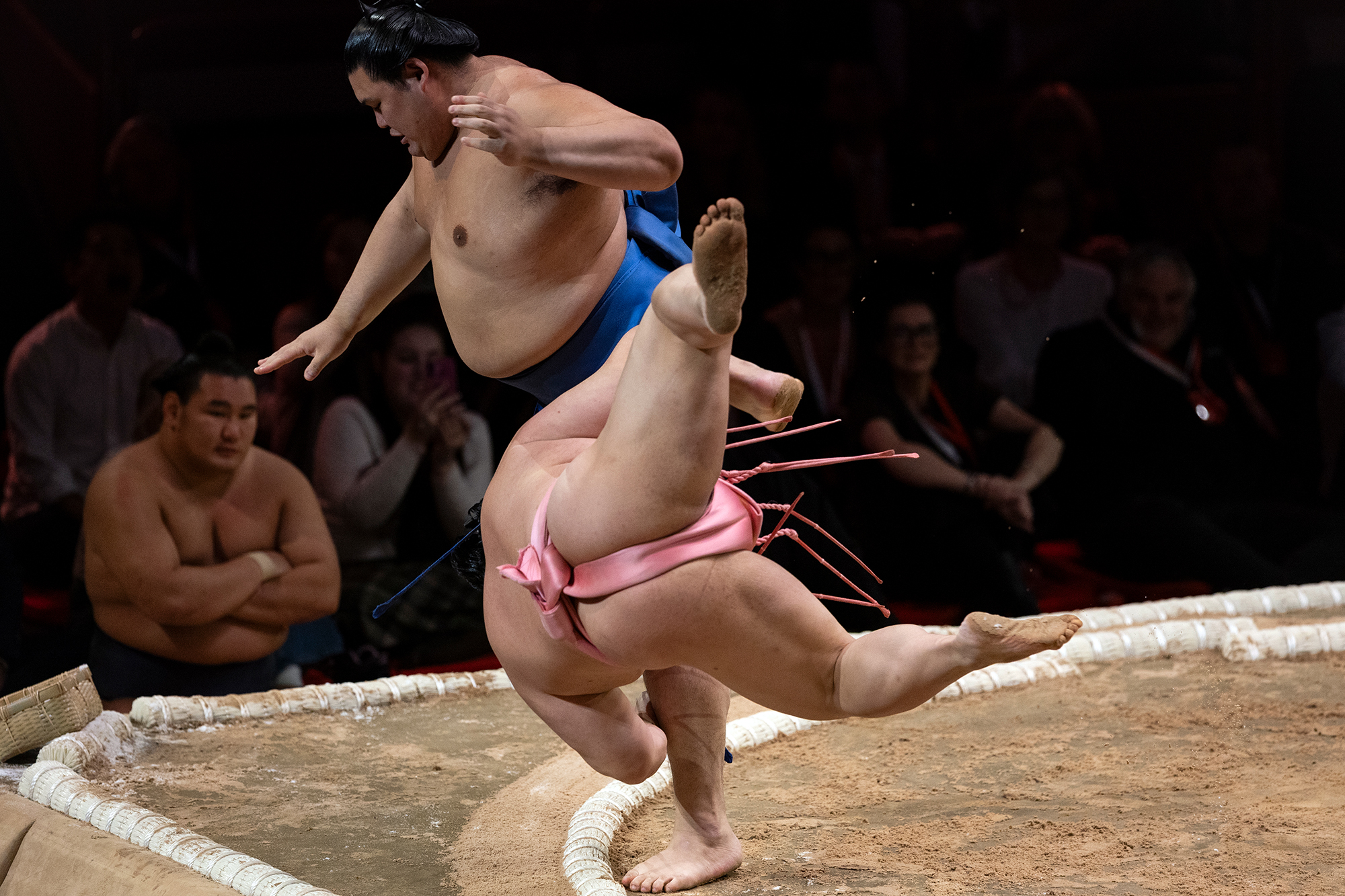
It is 34 years since Japan’s national sport last took its fascinating blend of cherished rituals and unlikely physical prowess away from its native land for a full five-day sumo tournament. As in 1991, the Royal Albert Hall is the overseas venue of choice for the country’s top rikishi (sumo wrestlers) to display their abundant wares this week.
So rare is the opportunity to see the sport’s artists in their considerable flesh outside of Japan that tickets to this London event sold out within minutes. The successful horde, comprising an unusual blend of expats from sumo’s homeland, local Japanophiles dressed in replica kimonos and suited corporate guests, pour in to take their chance. Excitement crackles.
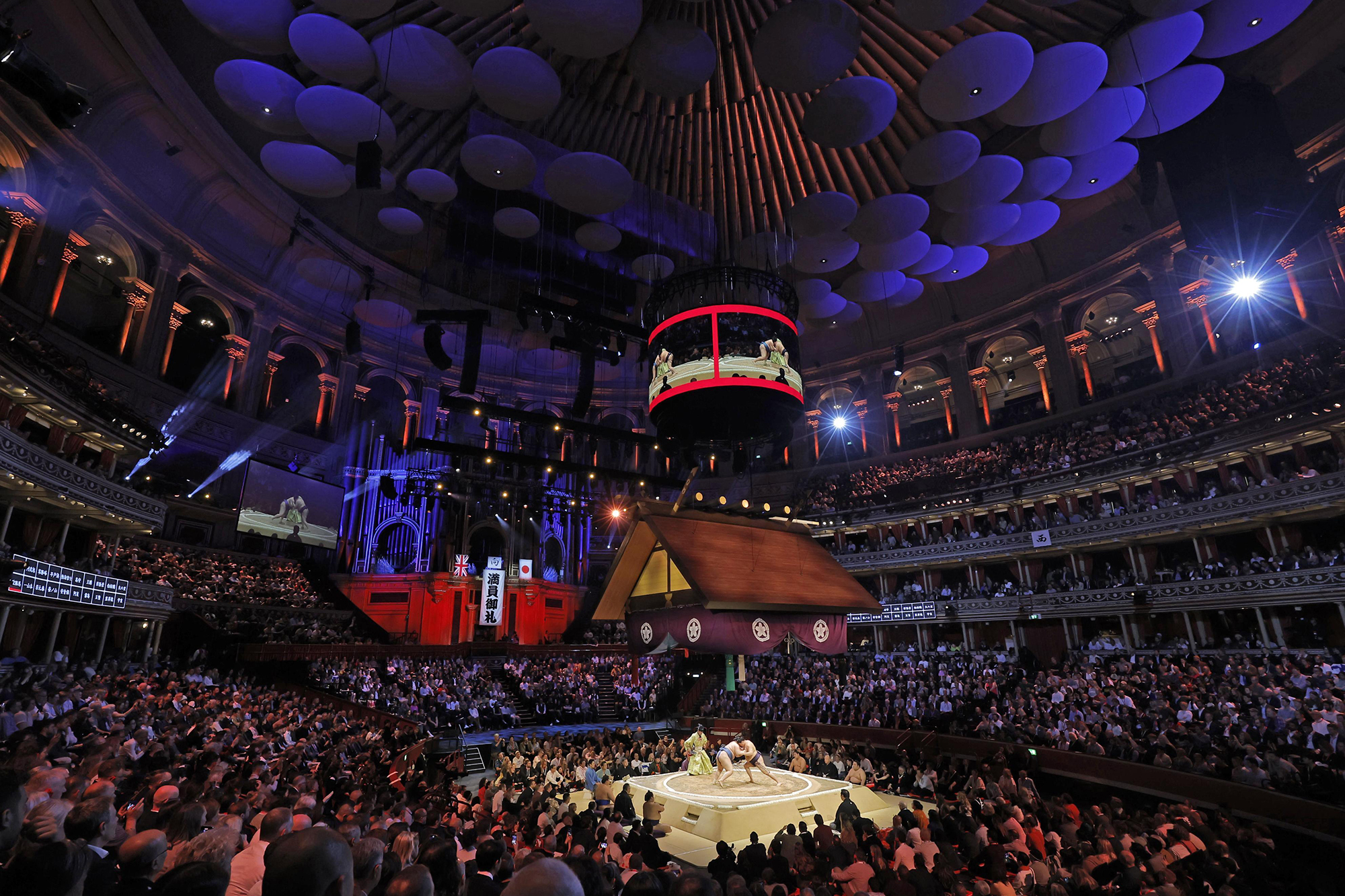
The venue’s preparations have been markedly different from those for the American bluegrass musician Billy Strings’s concert that immediately preceded this sporting spectacle and Classic FM’s 25th anniversary concert that follows. Extra insurance has been taken out to cover the not-infrequent eventuality of a rikishi falling out of the ring and plunging into a spectator seated on a ringside cushion. Ticket purchasers have been informed they choose such seats “entirely at their own risk”.
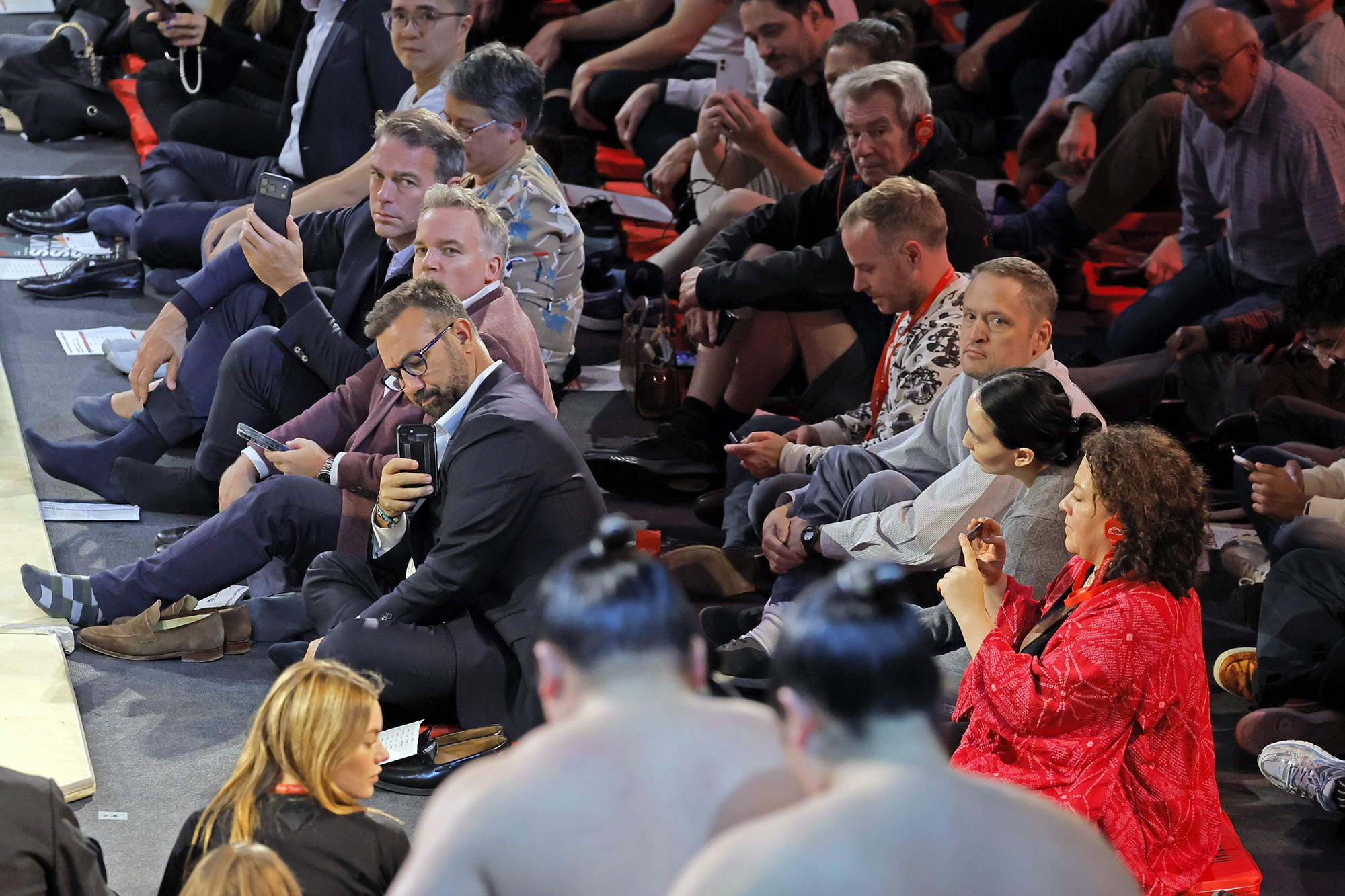
Fortified chairs have been sourced that can withstand weights of up 200kg (31st), should the heftiest rikishis fancy resting their legs at any point, and toilets reinforced for the same reason. Asked what a sumo’s backstage rider looks like, the head promoter states simply: “A lot of rice.” Indeed, 70kg of the grain has been ordered just for the 40 wrestlers to snack on each day (meals consist of far greater quantities), while the venue’s food wholesaler ran out of noodles earlier this week.
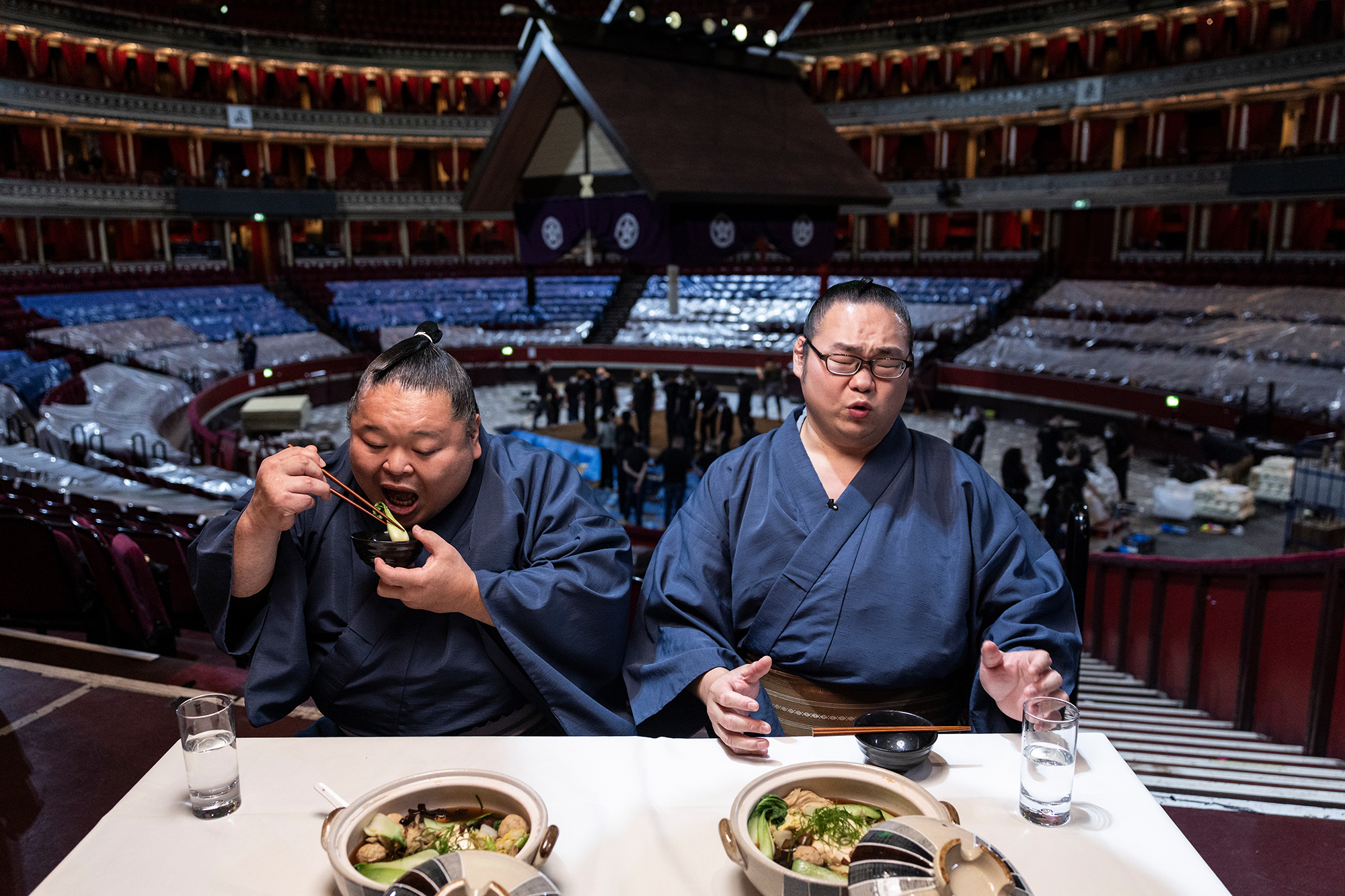
For the many uninitiated in attendance, some education is necessary, perhaps more so for the ample Shinto ceremonial elements of the event than for a relatively simple head-to-head battle determined by one man attempting to push another out of a ring or on to the floor. Part theatrical performance, part sporting contest, it is the countless rituals that elevate the show.
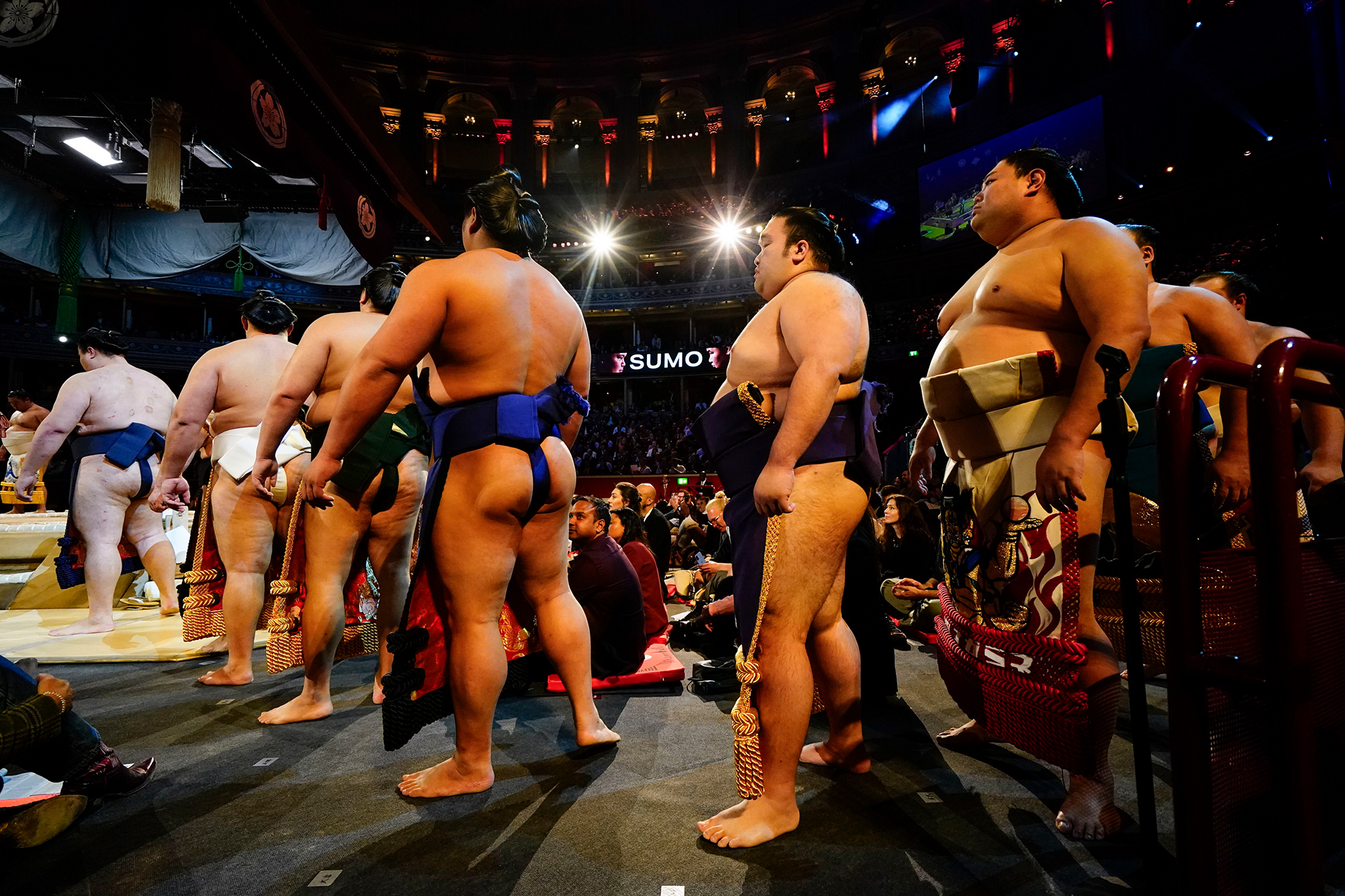
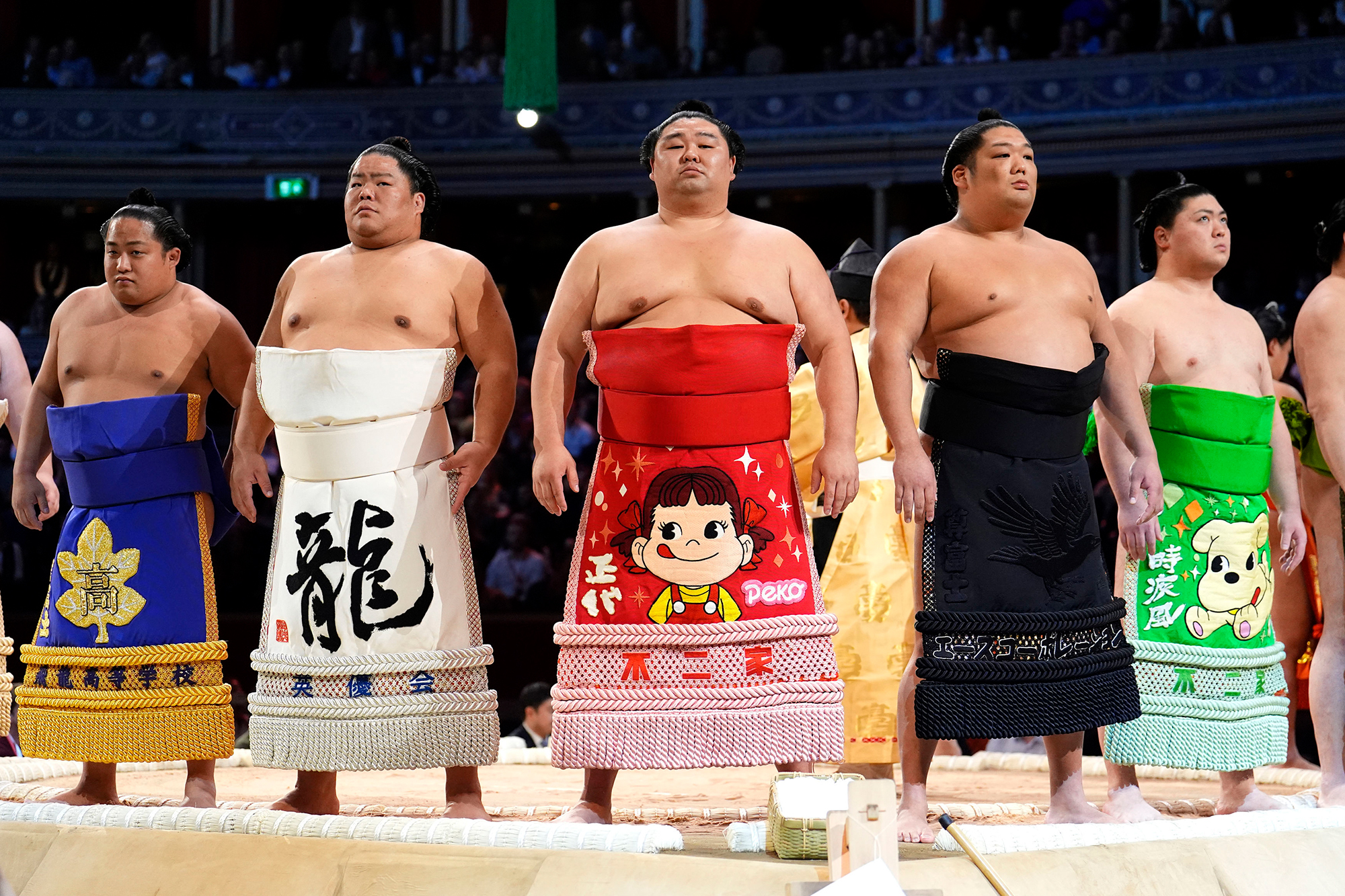
There is the poker-faced dohyo-iri opening ceremony, which sees every member of the extended sumo party’s entourage called to the ring by the clacking of wooden hyoshigi blocks resounding ominously around the hall’s interior. The raised clay dohyo ring itself is constructed from 11 tonnes of soil carefully sourced from Kettering and compressed into shape within a rice-straw border by highly skilled yobidashi attendants. Above sits a six-tonne Shinto shrine-like wooden roof, with tassels attached to each corner to represent the four seasons.
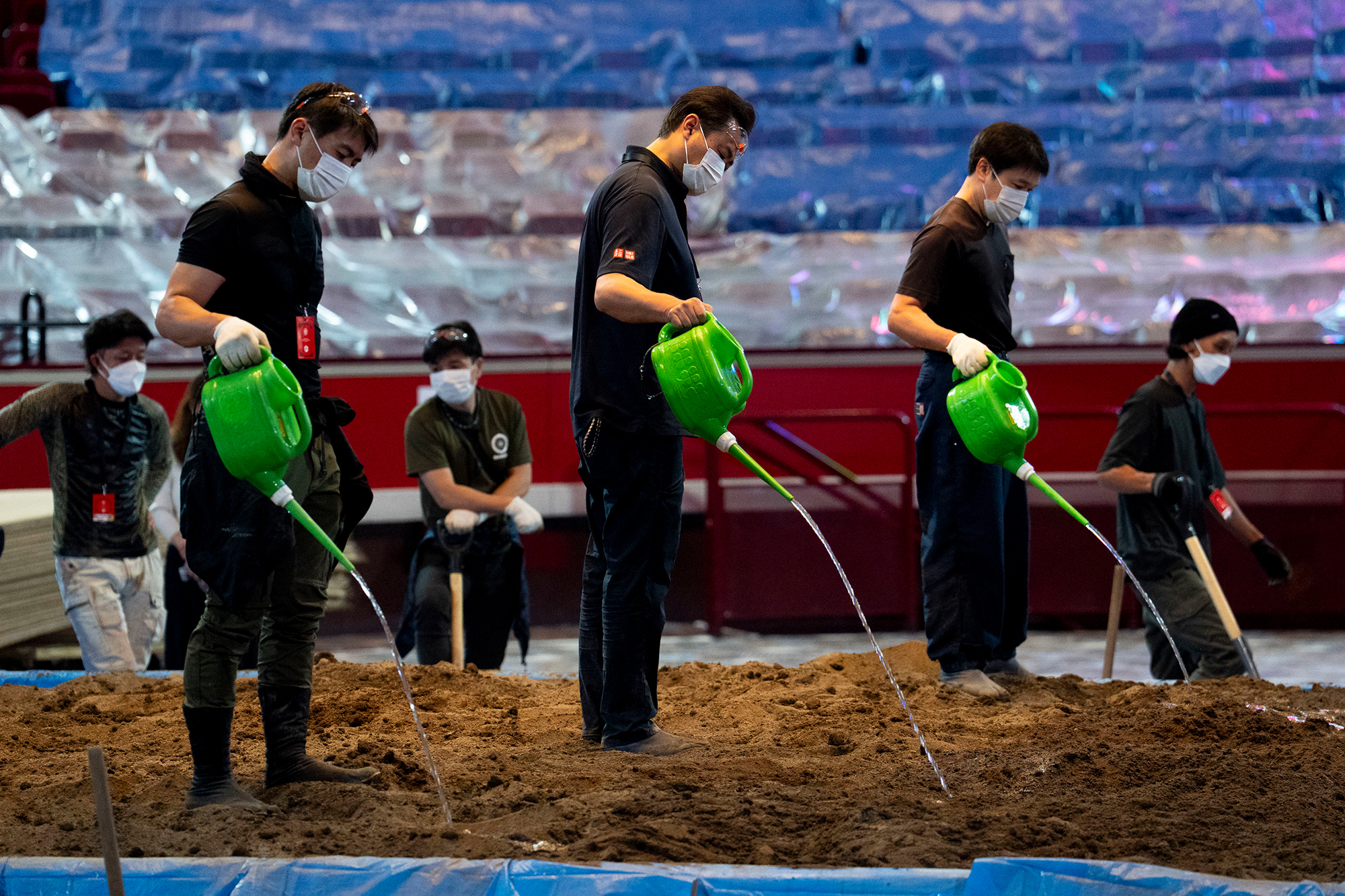
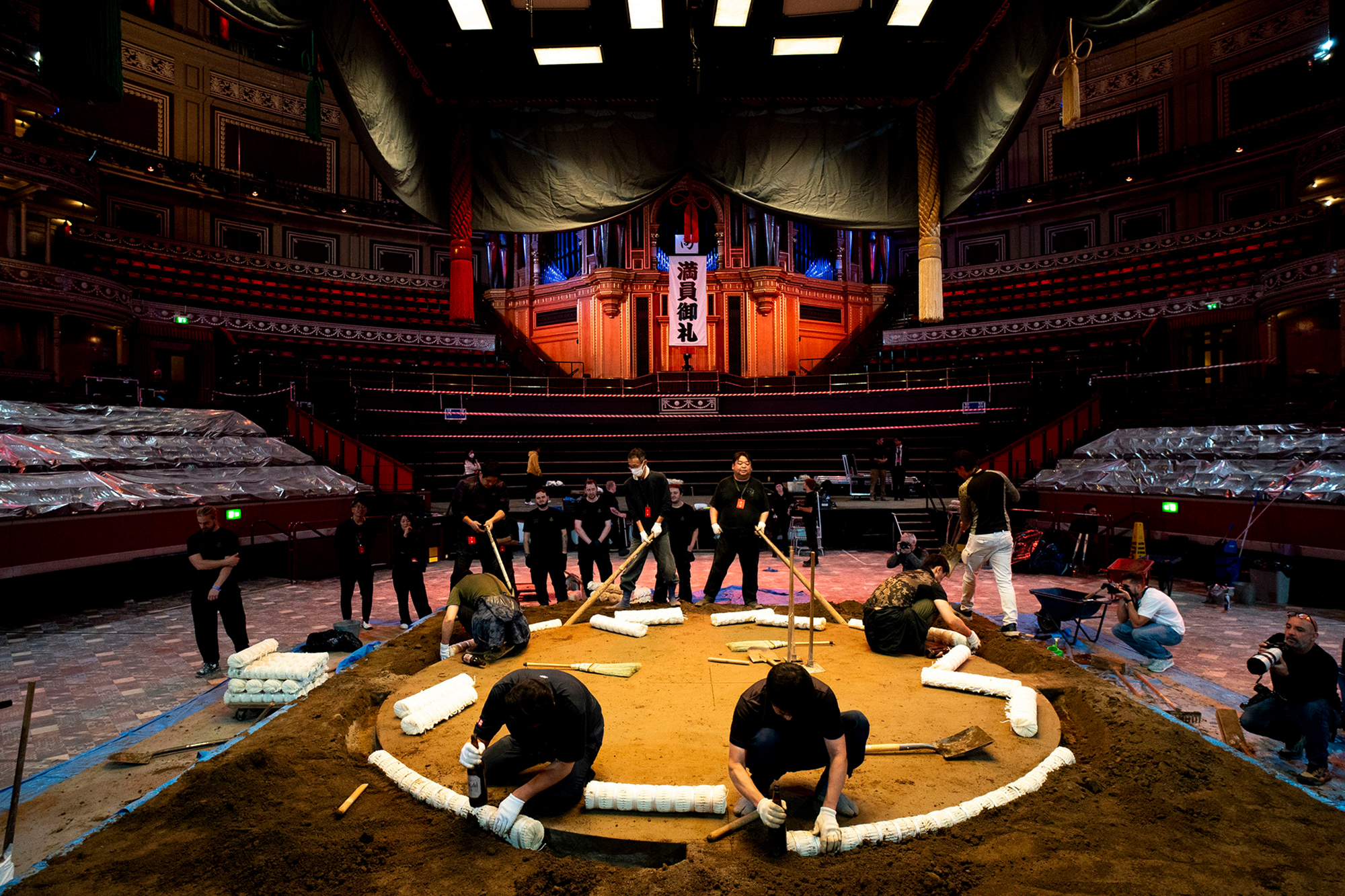
Gripped by every intricacy, the 5,000 in attendance fall into absorbed silence for the ceremony where a yokozuna (the highest-ranked wrestler) has a thick, heavy rope wound around his waist by five of his inferior peers. In unison, the crowd is then instructed to spring to life in euphoric blasts of “Yoisho” to help ward away evil spirits during a yokozuna’s ritual foot stomp. Every aspect is steeped in history, much of which has remained unchanged for centuries.
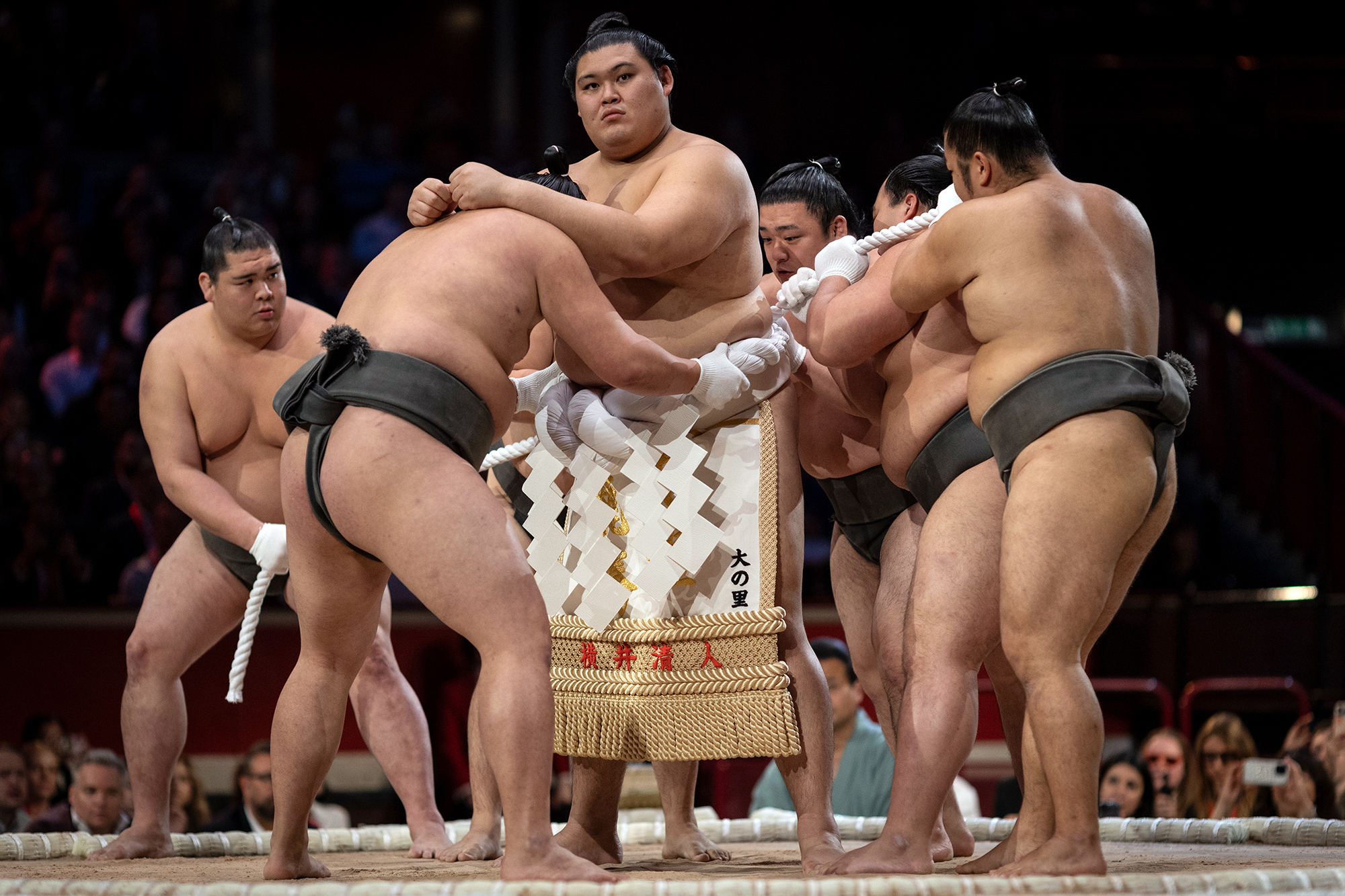
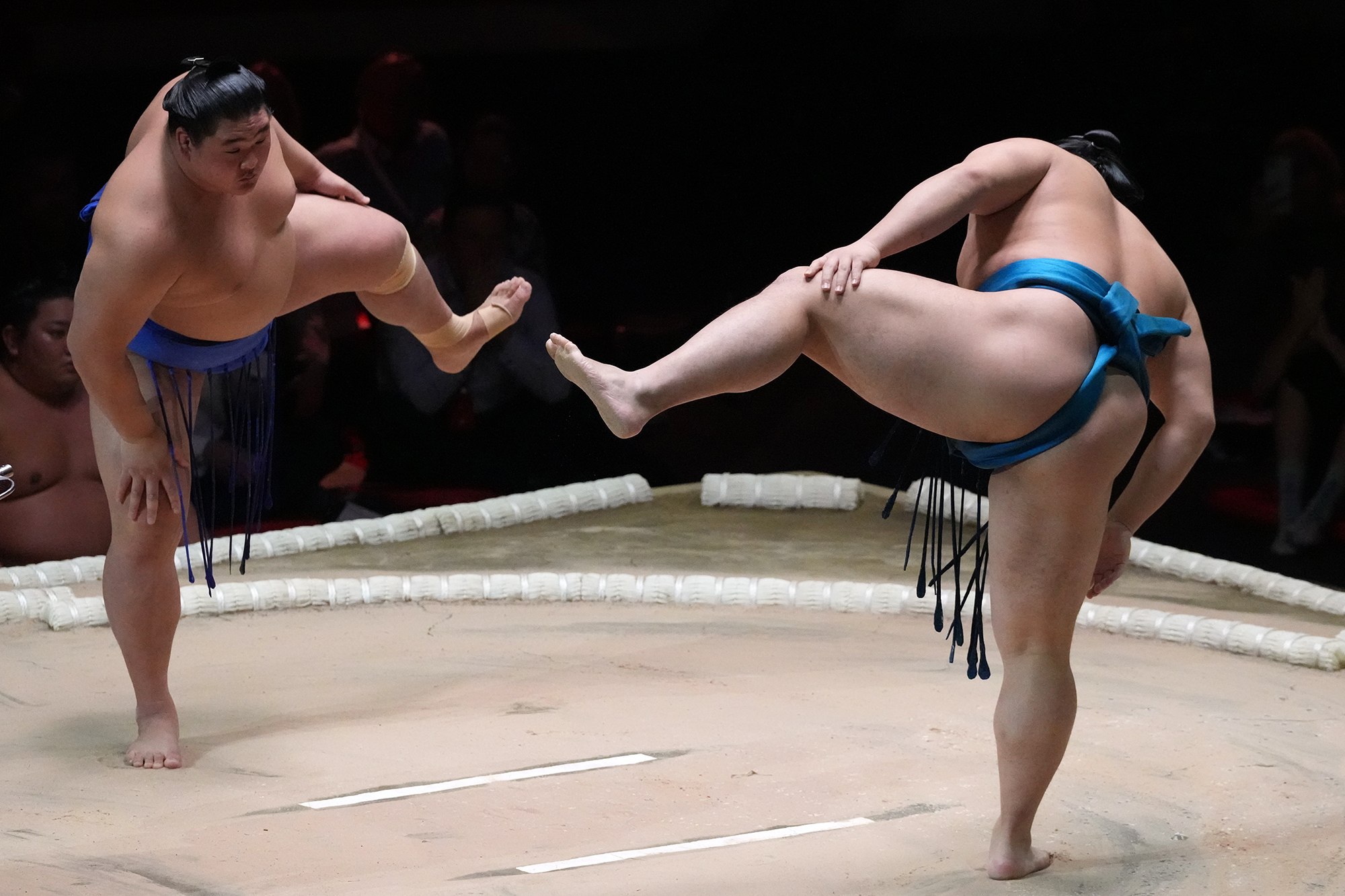
Stars in their homeland, the protagonists submit their entire existence to their sport, enduring monastic lives alongside fellow rikishis in communal training stables, where everyday life is dictated by strict tradition. Wake, train, eat, sleep. The lower ranks defer to their seniors at all times, and only those who reach the highest divisions are permitted any semblance of independence.
No wonder, perhaps, that numbers are decreasing, especially after a series of recent scandals over alleged mistreatment of junior wrestlers. From a peak of 1,000, there are now about 600 professional sumos in Japan, a growing proportion of which are foreign.
Ten of the 42 makuuchi top-division wrestlers in London this week hail from other countries, most notably Mongolia, but also Kazakhstan, Russia and Ukraine. One of the night’s biggest cheers comes when Ukraine’s 21-year-old Aonishiki wins his bout, continuing a meteoric rise that many believe could end in him becoming the first European ever to reach the highest yokozuna rank.
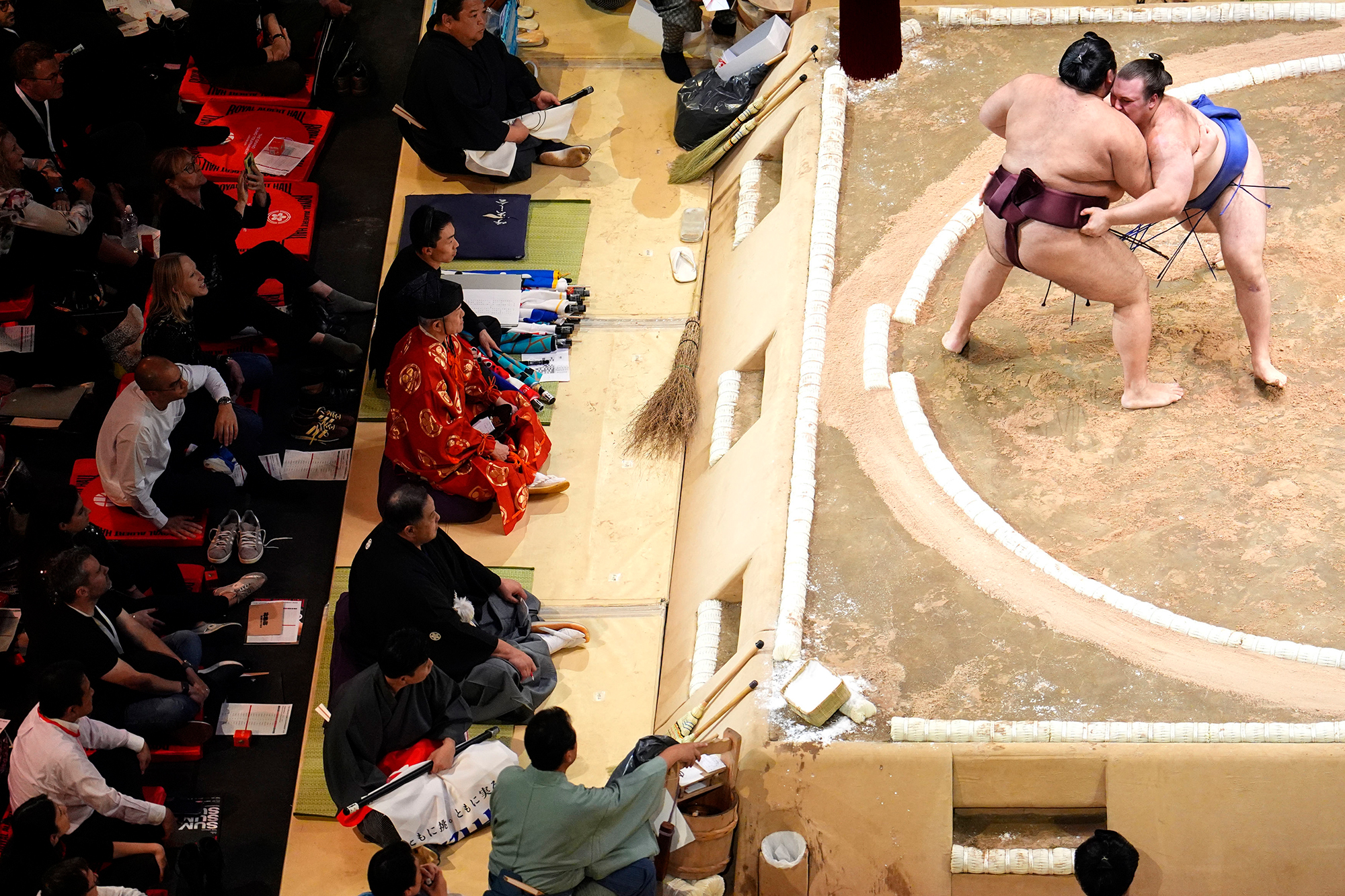
Hakkaku Rijicho, who won the 1991 Royal Albert Hall tournament and is now Japanese Sumo Association chairman, insists such an achievement would not be particularly noteworthy in Japan as “we don’t really have a differentiation between nationalities of the rikishi”. A rule limiting each stable to just one foreign-born wrestler suggests otherwise.
Sparing Japan’s blushes after a six-year period without a native yokozuna, Onosato ascended the highest rank earlier this year and was given top billing in the last of 20 bouts on the opening night of London action.
Befitting the exhibition nature of the event – slotted into a calendar that sees the makuuchi division take part in six major ranking tournaments per year – there is an expectation that Onosato will reach a final Sunday showdown unbeaten against his fellow yokozuna, the Chelsea-supporting Mongolian football fan Hoshoryu. As such, there was little jeopardy for the 191kg (30st) star in brushing aside a far lower-ranked opponent – effectively the 22nd seed – in his first fight.
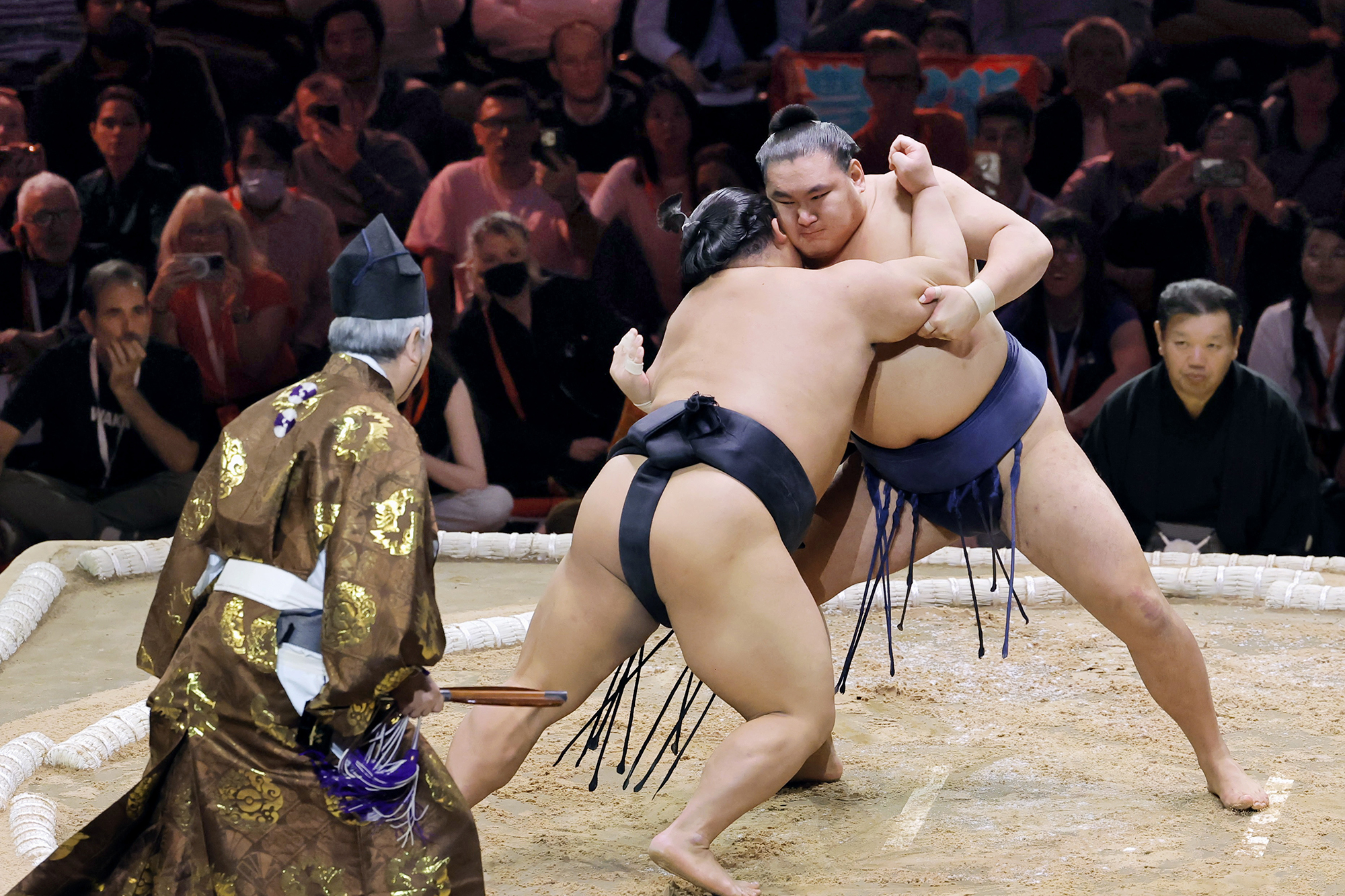
Such manipulation of the draw did was no detraction for an engrossed Royal Albert Hall crowd, who loudly revelled in wrestlers’ performative pre-fight efforts to intimidate opponents: the highest toss of salt (ritually thrown to cleanse the ring), the firmest leg stomp, the longest held stare.In stark contrast to the on-field hysteria that accompanies most sporting events, winners and losers alike adhered to a respectful absence of expression; no hint of celebration, no flicker of anger, no acknowledgment of the crowd.
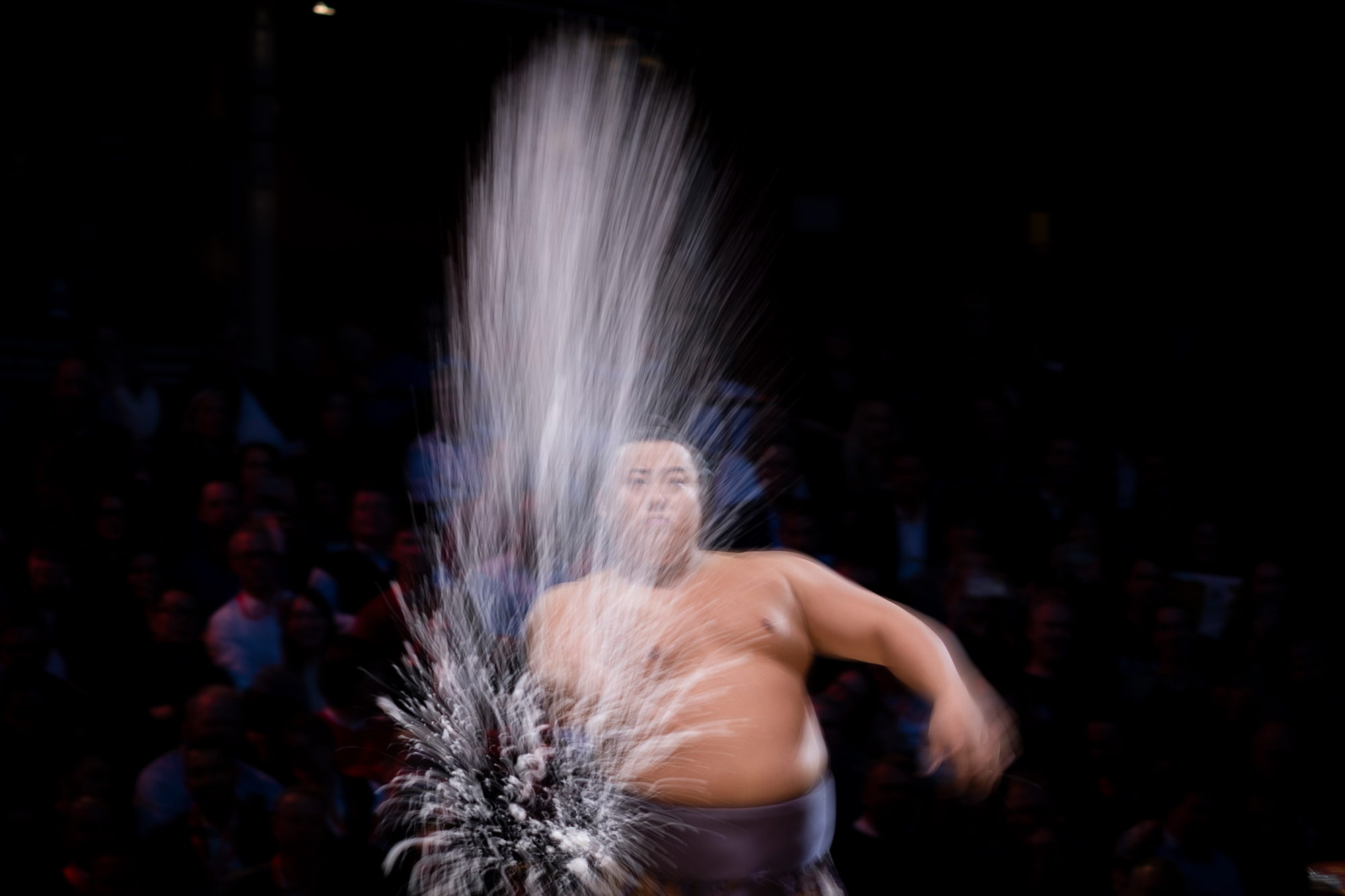
In place of the ubiquitous Black Eyed Peas declaration “tonight’s gonna to be a good night” – mind-numbing lyrics that blight so many sporting and cultural moments – were the distant calls of yobidashi announcing rikishi to the ring, and the poignant sounds of drum beats opening and closing the action.
Only after the latter were London’s front-row city workers finally freed from a night-long battle to sit comfortably cross-legged. The cushions can remain in Tokyo; the saké rice wine and captivating entertainment can stay.
Photographs by Kyodo/Newscom/Avalon; Ryan Pierse/Getty Images; Jordan Pettitt/PA Wire; AP Photo/Frank Augstein
